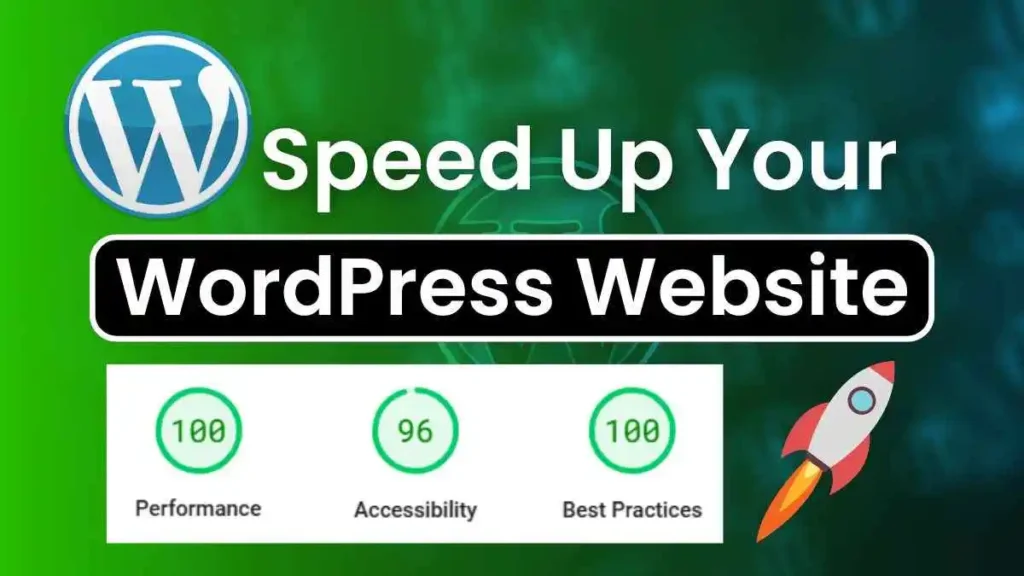Speed is one of the most important aspects of any website as your visitors expect a smooth and fast experience.
Website speed isn’t just a techy detail — it directly affects your SEO rankings, user experience, and even your revenue. In fact, Google has confirmed that page speed is a ranking factor, and studies show that users leave a site if it takes more than 3 seconds to load. The good news? If you’re using WordPress, improving your site speed can be straightforward — even for beginners.
Here’s a practical, beginner-friendly guide to help you speed up your WordPress site.
1. Choose a Lightweight Theme
Not all themes are created equal. Some are packed with bloated code and unnecessary features that slow down your site.
Recommended lightweight themes:
- Astra
- GeneratePress
- Neve
- Kadence
These themes are optimized for speed and can drastically improve loading time.
2. Use a Caching Plugin
Caching stores a static version of your site so it loads faster for returning visitors. This can cut your load time in half — or more.
Top caching plugins for beginners:
- WP Rocket (premium but very user-friendly)
- W3 Total Cache
- LiteSpeed Cache (great if your host uses LiteSpeed server)
Install, activate, and follow their setup wizards — no coding needed.
3. Compress Your Images
Images are often the biggest files on a website. Optimizing them without losing quality is crucial.
Free image compression plugins:
- Smush
- ShortPixel
- EWWW Image Optimizer
Pro tip: Always use JPEGs for photos and PNGs for transparent images.
4. Limit the Number of Plugins
Too many plugins can slow your site — especially if they run background processes or load unnecessary scripts.
Tips:
- Deactivate and delete any plugins you’re not using.
- Look for all-in-one plugins (e.g., RankMath includes SEO, schema, redirections, etc.)
5. Use a Content Delivery Network (CDN)
A CDN distributes your content across global servers, so visitors access your site from the nearest location.
Popular CDNs:
- Cloudflare (free and easy to set up)
- BunnyCDN
- KeyCDN
Your host or caching plugin may also have a built-in CDN integration.
6. Optimize Your WordPress Database
Over time, your WordPress database collects unnecessary data like post revisions, spam comments, and transient options.
Use plugins like:
- WP-Optimize
- Advanced Database Cleaner
One-click optimization can remove the clutter and speed up queries.
7. Minify CSS, JavaScript & HTML
Minification removes whitespace and unnecessary code characters to reduce file sizes.
How to do it:
- If using WP Rocket, this is automatic.
- For other setups, install Autoptimize or Fast Velocity Minify.
These tools automatically combine and compress your site’s assets for faster loading.
8. Enable Lazy Loading
Lazy loading ensures that images and videos only load when they enter the user’s view. This dramatically improves initial page load time.
Built-in WordPress feature:
As of WordPress 5.5+, lazy loading is built in. But plugins like Smush or Lazy Load by WP Rocket offer more control.
9. Choose the Right Hosting Provider
Your hosting provider plays a huge role in performance. Shared hosting might save money, but it can slow your site.
Top hosting for speed:
- SiteGround – known for speed and reliability
- Cloudways – great for scaling and performance
- Hostinger – budget-friendly but fast
If your site is growing, consider moving to managed WordPress hosting for better performance.
10. Test Your Speed Regularly
Use speed testing tools to see where your site stands and what to fix.
Best tools for speed testing:
- GTMetrix
- PageSpeed Insights
- Pingdom Tools
Run tests after every major update or design change.
Final Thoughts
Improving your WordPress site speed doesn’t have to be complicated. Focus on the basics: a good theme, optimized images, caching, and reliable hosting. With just a few tweaks, you can significantly enhance your site’s load time and give both your visitors and Google something to smile about.

